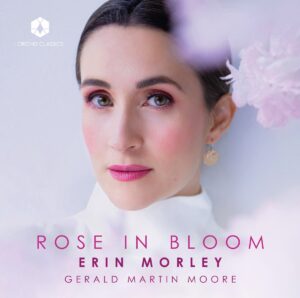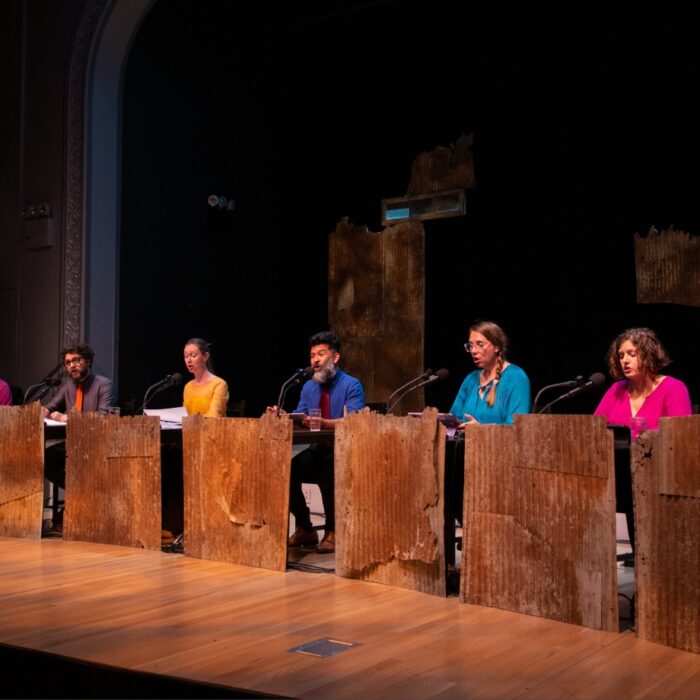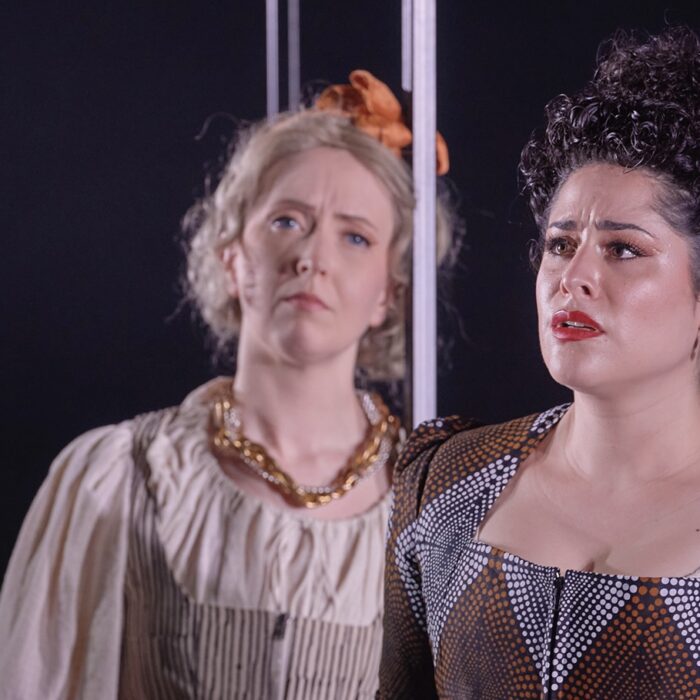
CD Review: Erin Morley’s ‘Rose in Bloom’
By Bob DieschburgIn her first solo recital on CD, Erin Morley gives her all. “Rose in Bloom” presents like a carefully arranged flowerbed which, in a horticultural twist, invites in the musical exploration of roses and peonies (Rimsky-Korsakov and Ricky Ian Gordon), tulips (Ricky Ian Gordon), lilacs, and daisies (Rachmaninoff and Ivor Novello).
“Like a grand garden with structured plots and wider landscapes” – the booklet explains – “this program of songs proceeds with an organic unity across various composers, languages, periods, and styles of music. Rarities flourish alongside familiar blooms, providing a pleasing variety.”
And variety there is; in addition to the above-mentioned “Rose in Bloom” features lieder by as diverse a roster of composers as Arthur Sullivan, Michael Head, Rachmaninoff, Brahms, Zemlinsky, Saint-Saëns, Milhaud, and Berg.
Of Flowers and Birds
The unifying thread is obviously thematic. But the release also allows for musically telling observations, such as comparison between Saint-Saëns’ “Le Rossignol et la Rose” and Darius Milhaud’s “Chanson de Ronsard.” Both are tonal depictions of birdsong with different technical demands each.
In the former Morley demonstrates the impressive bandwidth of her coloraturas, each coated with the warm timbre of her slender yet remarkably full-bodied soprano voice. In the Milhaud piece she adds to her virtuosic display of coloratura runs, an uncanny feel for the French language, clearly articulated and intelligently phrased.
At the very heart of “Rose in Bloom” is Morley’s interpretation of Ricky Ian Gordon’s “Huit Chansons de Fleurs.” Based on a very eclectic set of poems, including Dorothy Parker’s “One Perfect Rose,” the songs are best understood as an extended metaphor on the cycle of life, condensed into the variegated imagery of flowers and their symbolism.
While they thematically align with the album’s flowery title, who currently writes does not believe they most proficiently describe the very essence of Morley’s abilities. Their technical requirements, for instance, are not tailored to a coloratura soprano of her caliber; also their intimacy, while charmingly witiful, is different from the expressive intensity of the (post-)Romantic idiom in Rachmaninoff, Zemlinsky, or the ever melodious Rimsky-Korsakov.
Morley delineates Gordon’s songs with pristine musicianship; yet she rings more memorably in the remaining tracks, including the German lieder whose melancholy zeitgeist she captures with unfailing accuracy.
An American Nightingale
Overall, Morley thrives on the ambitiousness of her solo debut. In Brahms’ “Lerchengesang” she imbues her voice with a deeply felt sadness. By contrast, in “Neath My Lattice Through the Night” she delights with formidable joie de vivre topped by the sky high tones of the title-giving Rose-in-Bloom’s cadenza.
She is helped by the sympathetic accompaniment of her pianist and mentor Gerald Martin Moore who aptly supports his American Nightingale even through the album’s most relentlessly fast passages.
Erin Morley, in short, commands a beautifully ductile instrument which enthusiasts will be glad to find immortalized on CD. “Rose in Bloom” does it full justice, although the fin-de-siècle repertory seems to suit her vocal inclinations better than the remainder of the program. “Rose in Bloom” is – to end on a pun – the portrait of a blossoming artist.


